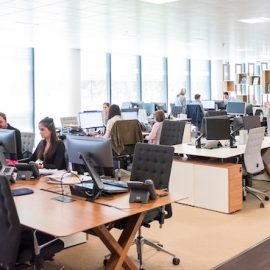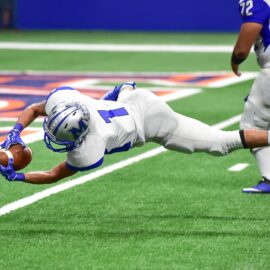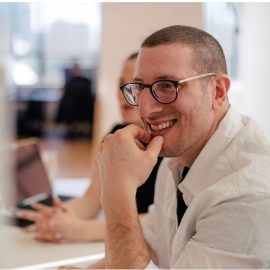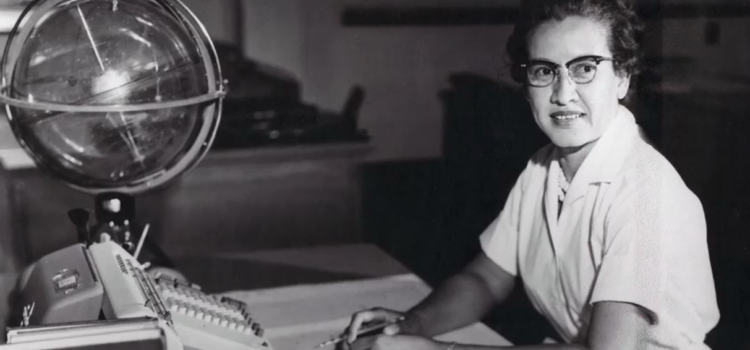
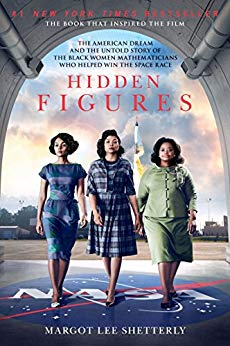
This article is an excerpt from the Shortform summary of "Hidden Figures" by Margot Lee Shetterly. Shortform has the world's best summaries of books you should be reading.
Like this article? Sign up for a free trial here .
Who is Hidden Figures‘ Katherine Johnson? What was her career like, and what did she do at NASA?
Hidden Figures‘ Katherine Johnson was a mathematician who worked at NASA during the height of space travel. Katherine’s contributions helped make space travel possible, but she also contributed to her field and made lasting discoveries, cementing her legacy at NASA.
Katherine Johnson’s New Career
Pioneering black female engineers and mathematicians like Dorothy Vaughan, Mary Jackson, and Katherine Johnson left an indelible mark on NASA, the struggle for African-American civil rights, and the United States itself.
Well-paid federal jobs like the ones awaiting Katherine and Jimmy helped build the emerging black middle class. Like those who had come to Hampton Roads during World War Two, Katherine found a ready-made community waiting to accept her and her family, helping her fill the void of the world she’d left behind in her native and beloved West Virginia. As an added bonus, Katherine would be reporting to her old neighbor from West Sulphur Springs—Dorothy Vaughan.
Charm Offensive
Although Hidden Figures‘ Katherine Johnson had real credentials with her honors degree in mathematics and her teaching experience, she started at Langley with the rank of SP-3: a level 3 sub-professional, the low rank to which nearly all women at Langley were assigned during this era.
After just two weeks on the job, Katherine was moved to the Flight Research Division, one of the most important and powerful groups at Langley. This was a major step forward in her career and a major move toward integration. The laboratory was always a curious outpost in the heartland of Jim Crow. At Langley, the racial barrier was a bit murkier, the walls of separation more scalable. There were still separate bathrooms, but African-Americans also had an opportunity to demonstrate their value as professionals.
Permanent Role in The Flight Research Division
Dorothy Vaughan was a tireless advocate for the computers who worked under her. After hearing how well Katherine was performing in the Flight Research Division, she presented the head of the division with an ultimatum: either give Katherine the raise and permanent position in the division she deserved, or return her to West Computing. The division chief, the formidable and intimidating Henry Pearson, acceded to Dorothy’s pressure: Katherine was given a salary increase and a permanent job in his Maneuver Loads Branch in 1953.
This group was working on the aerodynamics of airplanes as they moved in and out of steady, stable flight—a key subject area of research in the Cold War 1950s. It was a very masculine, testosterone-fueled workplace, one which didn’t seem outwardly hospitable to a female computer. But Katherine held her own and impressed the engineers with her insatiable intellectual curiosity and her obvious passion for the work. What she relished most of all was the intelligence of her colleagues—she respected their intellectual capacity, and they respected hers right back. They stopped seeing her as the “black computer” and saw her simply as “Katherine.”
On one of her first assignments, Hidden Figures‘ Katherine had to conduct research into why a propeller plane had fallen out of the sky for seemingly no reason. She pored over the numbers, calculating the airspeed, acceleration, altitude, and other data points from the flight in an attempt to unlock the mystery of this crash. Through her data analysis, the engineers determined that the propeller plane had crossed the flight path of a jet and had gotten caught in its wake vortex (similar to how, on water, the wake created by a large ship can overwhelm and capsize a small boat). This discovery led to changes in air traffic regulations, mandating minimum times and distances between flight paths. Katherine’s work had made a powerful and direct impact on the real world.
The Space Task Force and Manned Space Travel
History began playing out right in front of NASA’s Katherine Johnson. Her Flight Research Division worked closely with an engineering group called the Pilotless Aircraft Research Division (PARD), which specialized in rocketry. With the new emphasis on space, PARD’s and Flight Research’s engineers came to the fore. This represented Katherine’s wildest dreams come true—an opportunity to leap into the intellectual (and literal) unknown, to be involved with something completely untried and untested in the course of human history. She would be part of the effort to put human beings into outer space.
Within the Space Task Group, the demands of the work became all-consuming. Staying at work until after ten o’clock at night was normal, but the engineers were laser-focused on achieving their monumental task. Still, there were enormous engineering and physics challenges to overcome in the quest to launch a man into orbit.
There was zero room for error, as everything needed to be calibrated perfectly in order to launch the craft and return the astronaut safely. Katherine’s ballistic trajectory tables would determine whether or not the returning astronaut would land near enough to the waiting navy ships to be speedily scooped out of the sea and brought to safety. Even the slightest error would result in the craft missing its mark, putting the astronaut in mortal danger. This was made all the more complicated, as the capsule would both be launching from and landing back on a moving target: the orbiting planet Earth.
But NASA’s Katherine Johnson, as ever, was undaunted by the task. She had proven herself an incomparable mathematician and a quick study with the higher-level conceptual work. She was straightforward with her bosses, telling them, “Tell me where you want the man to land, and I’ll tell you where to send him up.”
Katherine authored her first research report, “Determination of Azimuth Angle at Burnout for Placing a Satellite over a Selected Earth Position” and helped shepherd it through the rigorous editorial and publication process. Its publication in September 1960 was the first from her division by a female.
When astronaut Alan Shepard became the first American to travel to space in Langley’s Mercury-Redstone 1 capsule in May 1961, it was a moment of triumph for the entire team. Although the enthusiasm was somewhat tempered by the fact that Soviet cosmonaut Yuri Gagarin had successfully made it to space the month before (and had achieved orbit, which Shepard’s craft had not), it proved that the United States had the technological capability to compete in the space race. It emboldened American policymakers and was a strong boost of confidence for a nation that feared it was falling behind its Cold War rival. Shortly after this, Kennedy challenged the nation to cross another frontier. He pledged that the US would complete a successful manned mission to the Moon by the close of the 1960s.
Katherine Johnson’s Role at NASA
With much influence and lobbying from Vice President Lyndon Johnson NASA decided to move the bulk of its space operations to Houston. This meant that the men and women of Langley would face difficult personal and professional decisions.
In Hidden Figures, Katherine Johnson chose to stay in Virginia. After all the changes and tumult in her children’s lives over the past few years, she couldn’t uproot them to Texas. She still would make highly valuable contributions to NASA, but she would be doing it away from the true nerve center of the agency in Houston.
Through the mission preparation, astronauts like Glenn forged close relationships with human computers like Katherine Johnson. As former navy pilots, the astronauts were accustomed to having constant and complete control over their craft. They were distrustful of the onboard electronic computers that would be determining their fate, as they would have little to no control over these functions. But they could and did trust the human computers. To the astronauts, these number-crunching women were the equivalent of test pilots, ensuring the soundness and reliability of their craft before they stepped into it. As Glenn always said, “Get the girl to check the numbers.”
Katherine’s Legacy
When, on July 20, 1969, the men of the Apollo 11 mission walked on the surface of the Moon, it was the fulfillment of many things—President Kennedy’s 1961 challenge, the hopes and dreams of a nation, and decades of research, advocacy, and struggle on the part of NASA’s black scientists and engineers. That night, Hidden Figures‘ Katherine Johnson watched the landing on television, transfixed by the marvel of human achievement she was witnessing, and her role in bringing it to fruition.
As she watched and listened to Neil Armstrong describe mankind’s historic leap, she thought of the men and women who had made her own journey possible—Dorothy Vaughan, Dr. Claytor, A. Phillip Randolph, her parents. From a little girl who used to gaze up in wonder at the sky, she was now the engineer who sent men to touch the face of the heavens and walk where no one had walked before.
NASA’s Katherine Johnson was undoubtedly one of the reasons for NASA’s great contributions to science and history. In Hidden Figures, Katherine’s journey to success and the obstacles she overcame make her achievements all the more incredible and admirable.

———End of Preview———
Like what you just read? Read the rest of the world's best summary of Margot Lee Shetterly's "Hidden Figures" at Shortform .
Here's what you'll find in our full Hidden Figures summary :
- How brave black women were instrumental to the American space race
- How they confronted racism and sexism to forge a better future
- Their enduring legacy in American history


